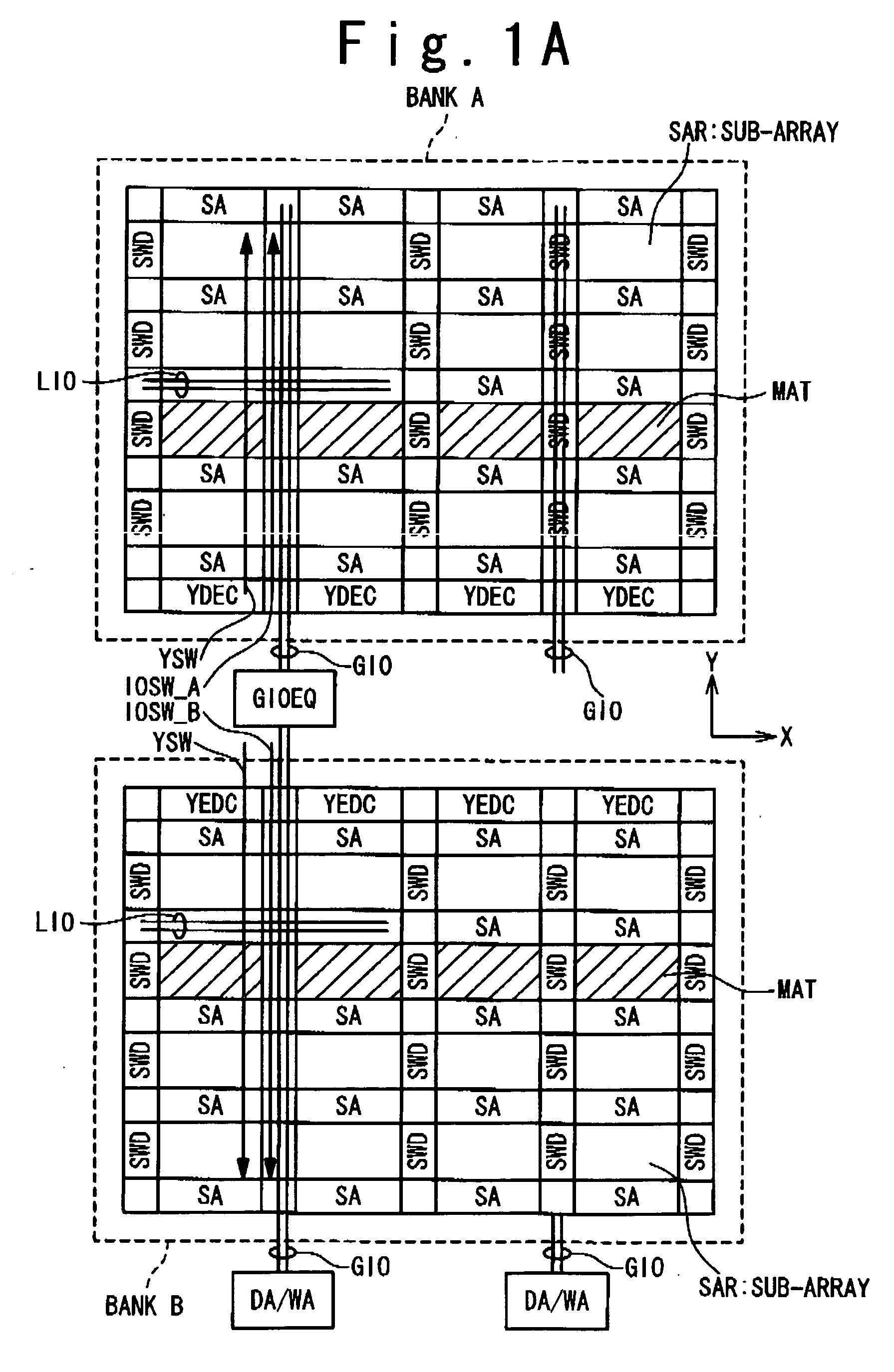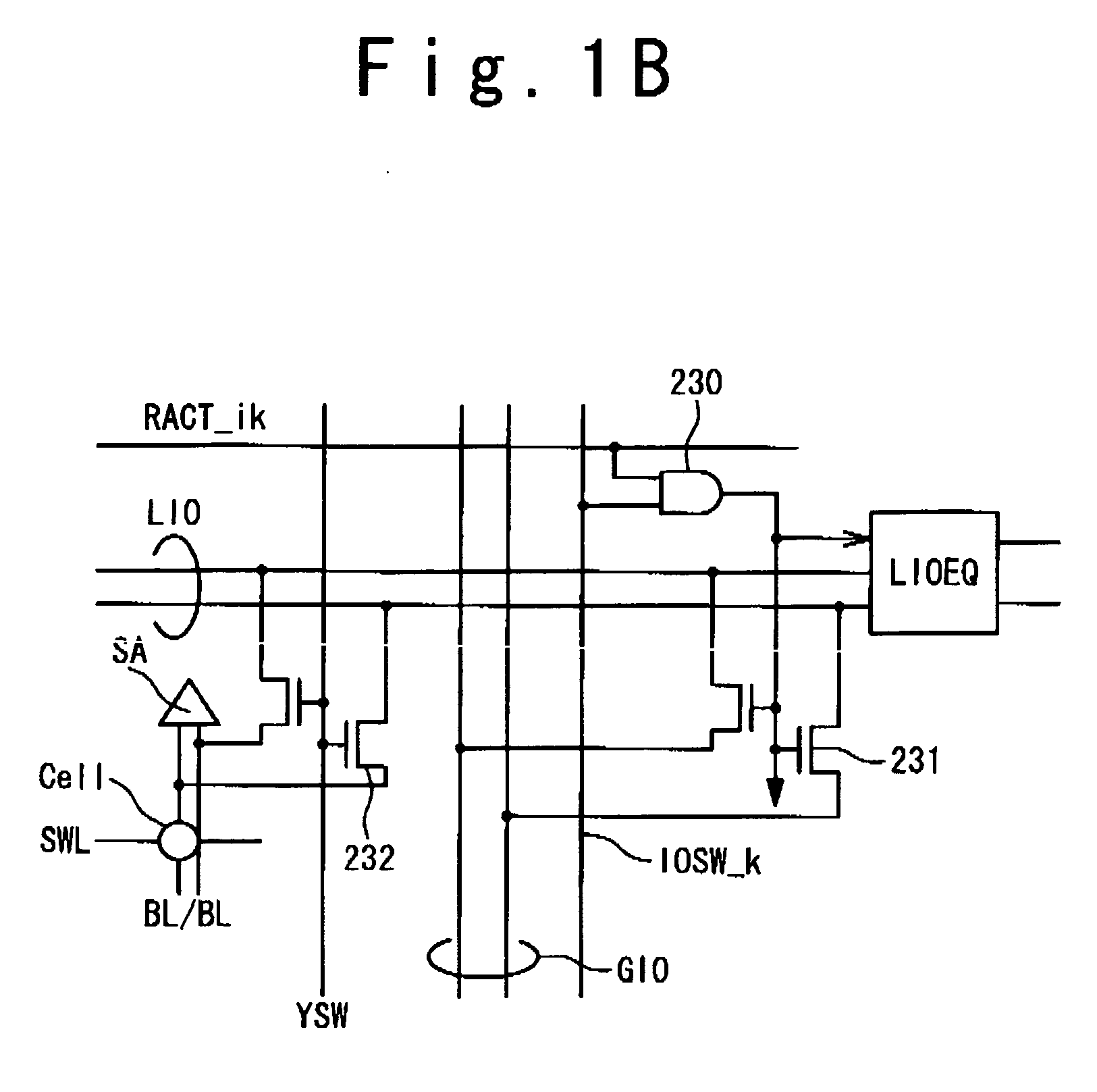Semiconductor memory device with hierarchical I/O line architecture
- Summary
- Abstract
- Description
- Claims
- Application Information
AI Technical Summary
Benefits of technology
Problems solved by technology
Method used
Image
Examples
first embodiment
[0076]FIG. 5 is a block diagram illustrating an exemplary structure of the timing control circuit 1 in a first embodiment of the present invention. The timing control circuit 1 receives an internal clock ICLK through a delay circuit 61. The timing of the received internal clock ICLK is adjusted by the delay circuit 61 so as to satisfy timing requirements, such as setup and hold times with respect to input data, including bank addresses. The timing control circuit 1 includes first to fourth logic circuits 10, 20, 30, and 40.
[0077] The first logic circuit 10 generates the GIO equalization timing signal / EQ in synchronization with the internal clock signal ICLK. Specifically, the first logic circuit 10 includes an AND gate 11, a delay circuit 12, and a buffer 13. The AND gate 11 receives the internal clock ICLK and the RWcmd signal on the inputs thereof, and outputs the results of the logical AND operation to the delay circuit 12. The output signal of the AND gate 11 is transferred to...
second embodiment
[0115]FIG. 8 is a block diagram showing a structure of a timing control circuit 1′ in a second embodiment of the present invention. The timing control circuit 1′ includes the first logic circuit 10, the second logic circuit 20, a third logic circuit 70, and a fourth logic circuit 80. It should be noted that the same elements are denoted by the same numerals in FIGS. 5 and 8. The third and fourth logic circuits 70 and 80 within the timing control circuit 1′ are different in the structure and operation from the third and fourth logic circuits 30 and 40 within the timing control circuit 1 shown in FIG. 5.
[0116] The third logic circuit 70 generates the column activation signals RWS_A and RWS B; it should be noted that FIG. 8 only illustrates the circuitry associated with one of the column activation signal RWS_A and RWS_B, and the symbol “RWS_k” collectively denotes the column activation signal RWS_A and RWS_B. The third logic circuit 130 includes a pair of AND gates 71 and 72, a SR fl...
PUM
 Login to View More
Login to View More Abstract
Description
Claims
Application Information
 Login to View More
Login to View More - R&D
- Intellectual Property
- Life Sciences
- Materials
- Tech Scout
- Unparalleled Data Quality
- Higher Quality Content
- 60% Fewer Hallucinations
Browse by: Latest US Patents, China's latest patents, Technical Efficacy Thesaurus, Application Domain, Technology Topic, Popular Technical Reports.
© 2025 PatSnap. All rights reserved.Legal|Privacy policy|Modern Slavery Act Transparency Statement|Sitemap|About US| Contact US: help@patsnap.com



